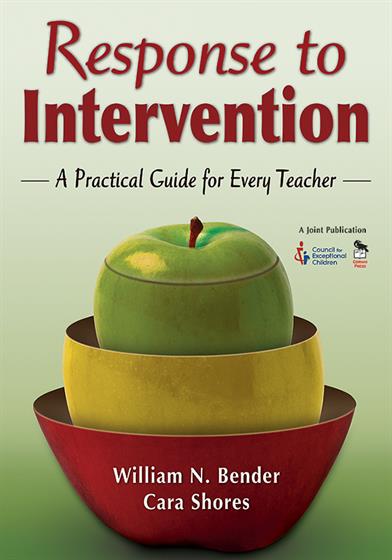Description
"Of the many RTI materials published today, this one is user-friendly and much broader in scope. Written in clear and understandable yet professional language, this excellent book is appropriate for all K–12 educators and administrators."
—Carla Osberg, Program Specialist, Special Populations
Nebraska Department of Education
"Offers a unique organization of key concepts, and addresses current implementation issues with integrity. The strategies, suggestions, and tips contribute to the overall reader-friendliness of the book. The comparison/contrast of the problem-solving and standard treatment protocol approaches is well written and provides the reader information to determine the best approach for the students, school, or district."
—Linda Palenchar, Coordinator, Office of Special Education
West Virginia Department of Education
Discover a resource that shows teachers how to implement RTI in the classroom!
As a result of NCLB legislation and the reauthorization of IDEA 2004, Response to Intervention (RTI) is now a mandated process for documenting the existence or nonexistence of a learning disability. For educators new to the RTI approach, Response to Intervention presents an overview of key concepts with guidelines for accountability practices that benefit students in inclusive classrooms.
Presenting the three tiers of RTI techniques, the authors demonstrate how general and special education teachers can use research-based interventions effectively to individualize instruction, monitor individual student progress, and implement strategies to meet the specific needs of all students.
Response to Intervention assists educators with the basic and necessary steps to provide students with a Free Appropriate Public Education (FAPE) in the Least Restrictive Environment (LRE), and includes:
- Vignettes, examples, and forms based on the problem-solving and standards-based approaches to RTI
- A chapter illustrating how RTI techniques benefit students who are economically underprivileged and/or culturally and linguistically diverse
- A chapter devoted to Frequently Asked Questions
Featuring helpful charts and reproducibles, this timely resource is sure to become a valuable guide as educators implement programs to document how individual students respond to specific educational interventions.
See Response to Intervention (Multimedia Kit)
Key features
- A chapter devoted to the Frequently Asked Questions about RTI (Chapter 5) as well as clear answers to best understand and implement this approach in determining eligibility for special education services.
- A specific chapter (Chapter 4) discussing how RTI especially meets the needs of students that are economically underprivileged as well as students that are culturally and linguistically diverse (CDLE) as research cites many of these students are over-represented in special education.
- Vignettes featuring teachers and leadership teams using the three-tiers of the RTI process utilizing the problem-solving approach and the standards-based approach.
- A Reflection feature interwoven throughout the guide enabling readers to critically think how educators can implement this new federally mandated assessment and accountability instructional process in classrooms and schools.
- Helpful reproducibles and charts to assist the educator in monitoring student progress, implementing RTI, and evaluating the interventions.




